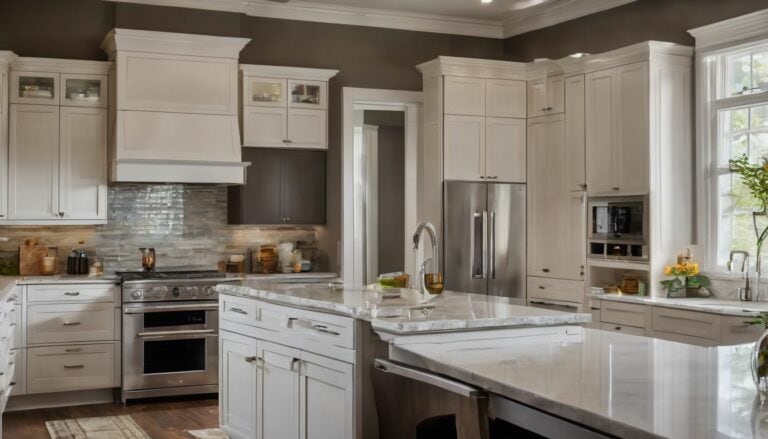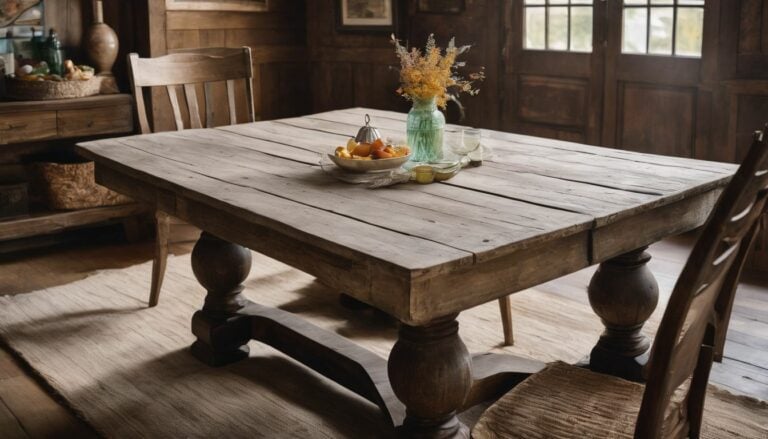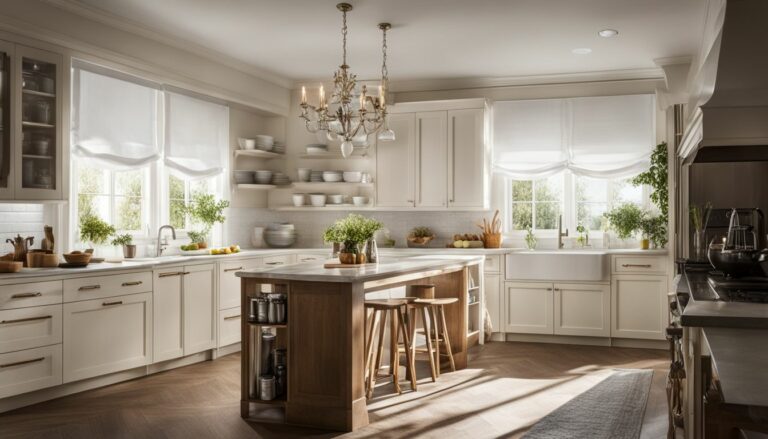Casement Windows: A Deep Dive into Their Pros, Cons, and Popularity
Can’t seem to decide on the perfect window style for your home? I can totally relate – not too long ago, I was stuck in that exact same spot. Trying to balance functionality and aesthetics isn’t always a walk in the park.
However, my quest led me to uncover casement windows – these charming features swing open up to 90 degrees, providing unbeatable ventilation. Intrigued by this unique design? Great! This comprehensive blog post will guide you through everything from their rich history to how they might just be the missing puzzle piece your house needs!
Key Takeaways
- Casement windows are a type of window that swings open sideways, allowing for good ventilation and fresh air.
- They have been popular for centuries due to their functional benefits and stylish appearance.
- Casement windows offer energy efficiency by providing a tight seal when closed, preventing drafts and reducing heat loss or gain.
- They are suitable for various architectural styles and can be customized to fit individual preferences.
Brief on Casement Windows

Casement windows have a unique charm. I open them out sideways, up to 90 degrees. This lets in lots of fresh air! You can find me in many homes because I’m easy to use and good looking.
To open or close, just turn my hand crank. It’s not hard at all! I also help keep your home cozy by saving energy better than hung and slider windows do.
Relevance in Modern Architecture
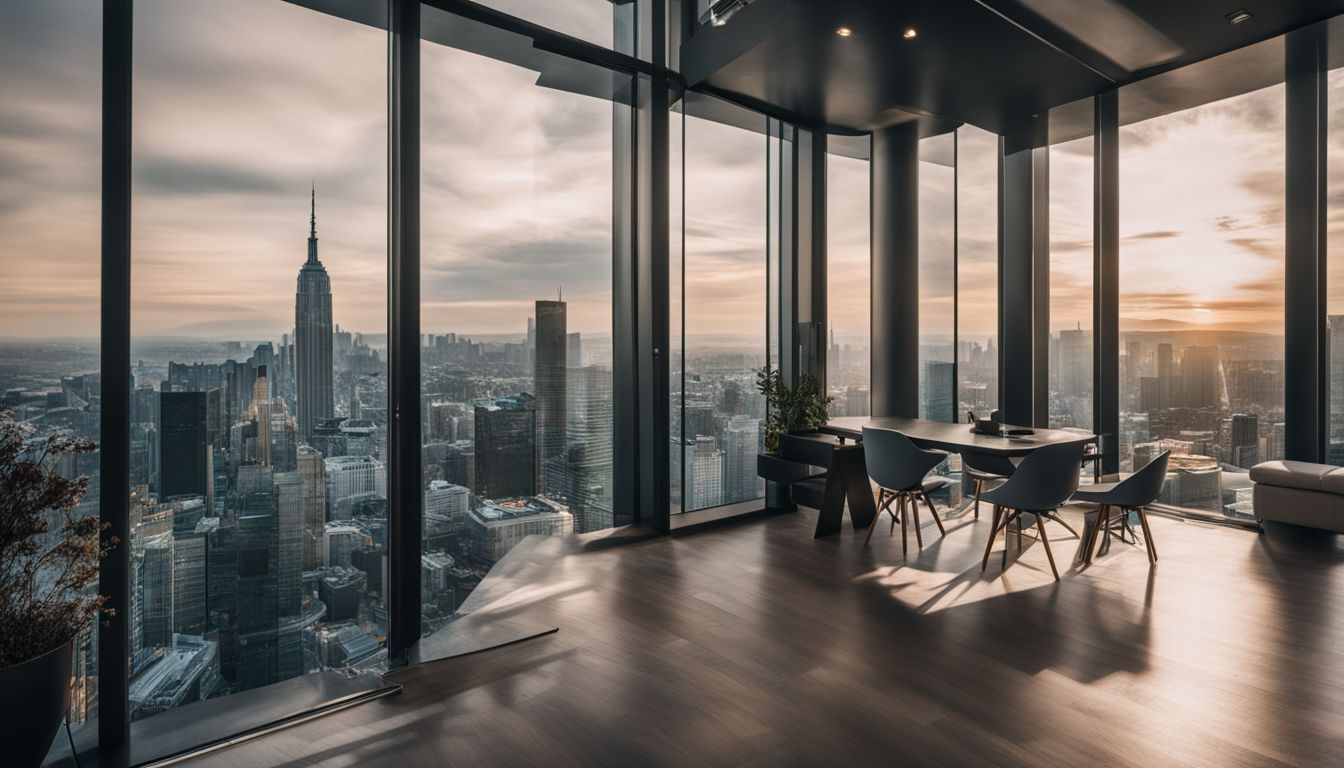
Casement windows hold a key place in modern architecture. They offer many useful features. Their design is simple but stylish. This makes them fit well into any building style. They swing open wide, so they let in lots of fresh air.
This helps keep homes cool and clean.
Also, casement windows are great at saving energy. When closed, they seal off tightly against their frames. This stops drafts from getting inside.
They work well for tall openings too because they can be made long and narrow. So, they’re a good choice for rooms with high ceilings or large walls.
Another thing people like about casement windows is the view they give you! Since there’s usually no bar down the middle to block your sight, you get a big clear look outside!
So as you can see, casement windows have many perks that make them relevant in today’s buildings.
Are Casement Windows Old Fashioned?
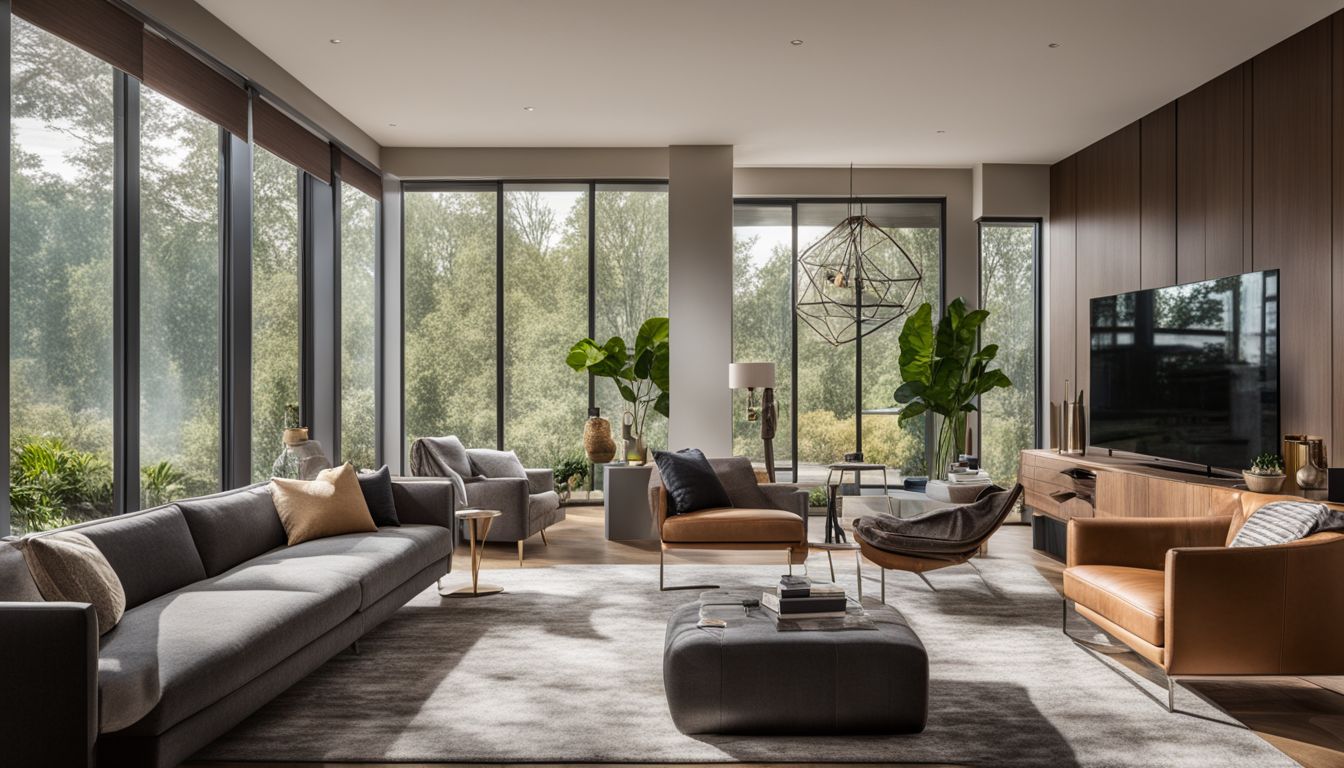
Some people might think casement windows are old. But that’s not right. They have been around for a long time, yes. Yet they still look good in homes today. Their design has changed over the years too.
Casement windows were once just simple and plain. Now you can find them with many looks and styles. They can be big or small, loaded with details or kept simple. This shows they have grown with the times, not stuck in the past! So, don’t believe if someone says casement windows are old fashioned.
Historical Perspective
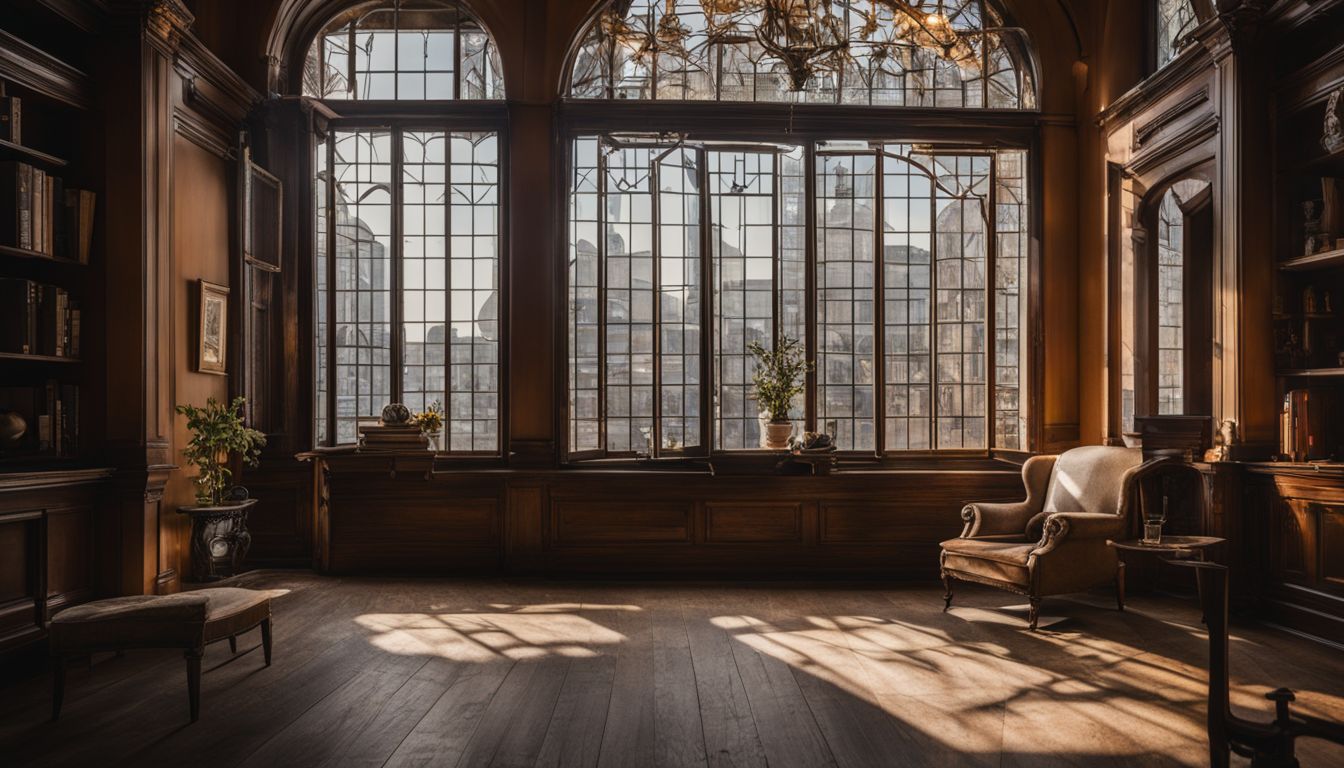
Casement windows have a rich historical background that dates back to the 18th century. Back then, they were introduced as replacements for older stone mullion windows. These early casement windows had hinges or pivots on the upright side of the vertically hung sash.
This design allowed them to swing open like doors, making them easy to operate and providing better ventilation compared to other window styles at that time. Over the years, casement windows have evolved in terms of materials used and design features, but their basic concept remains unchanged – hinged sashes that open outward for maximum functionality and aesthetics.
Evolution Over Time
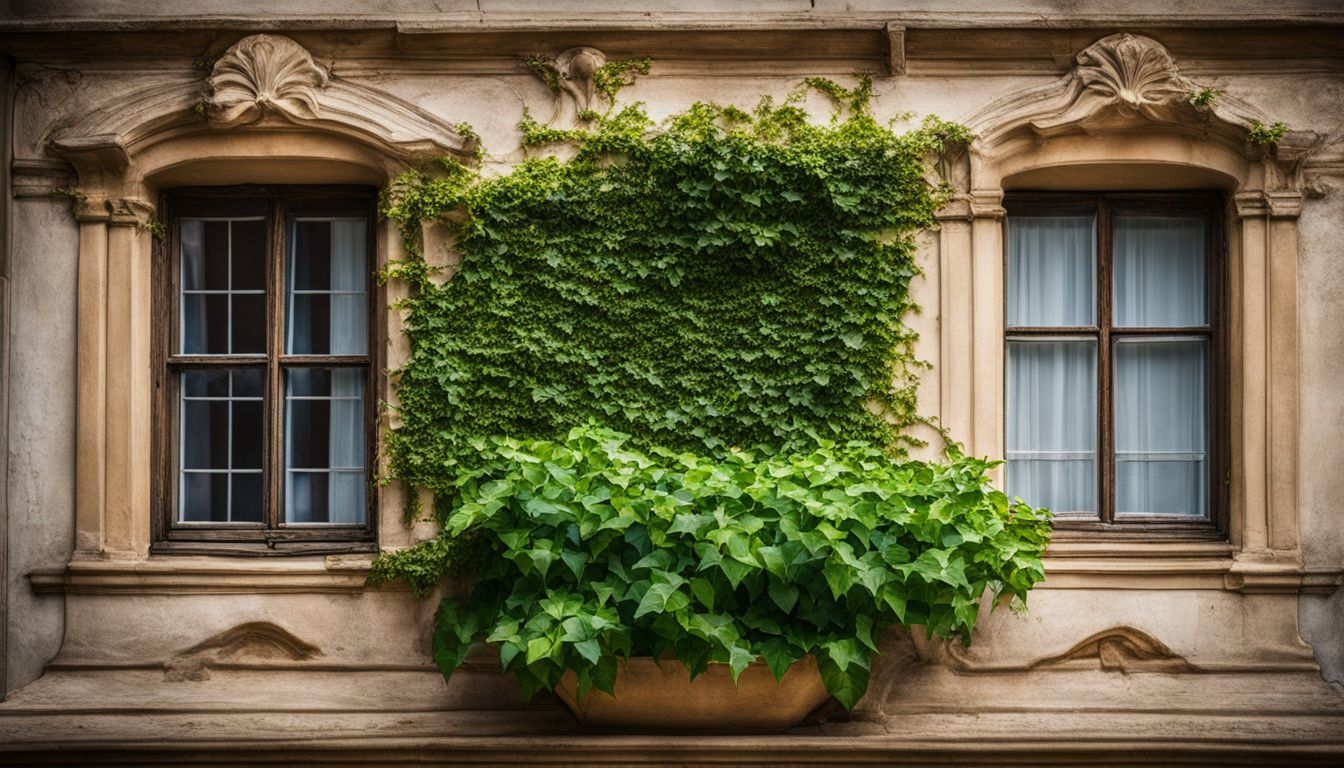
Casement windows have undergone significant changes and improvements over time:
- Casement windows were the only type of windows until the late 19th century.
- In the 20th century, sash windows became popular and replaced casement windows for some time.
- Window casements transitioned from being made primarily of wood to steel and aluminum in the 20th century.
- Nowadays, casement windows are the dominant type found in modern buildings in the UK and many parts of Europe.
When Were Casement Windows Popular?
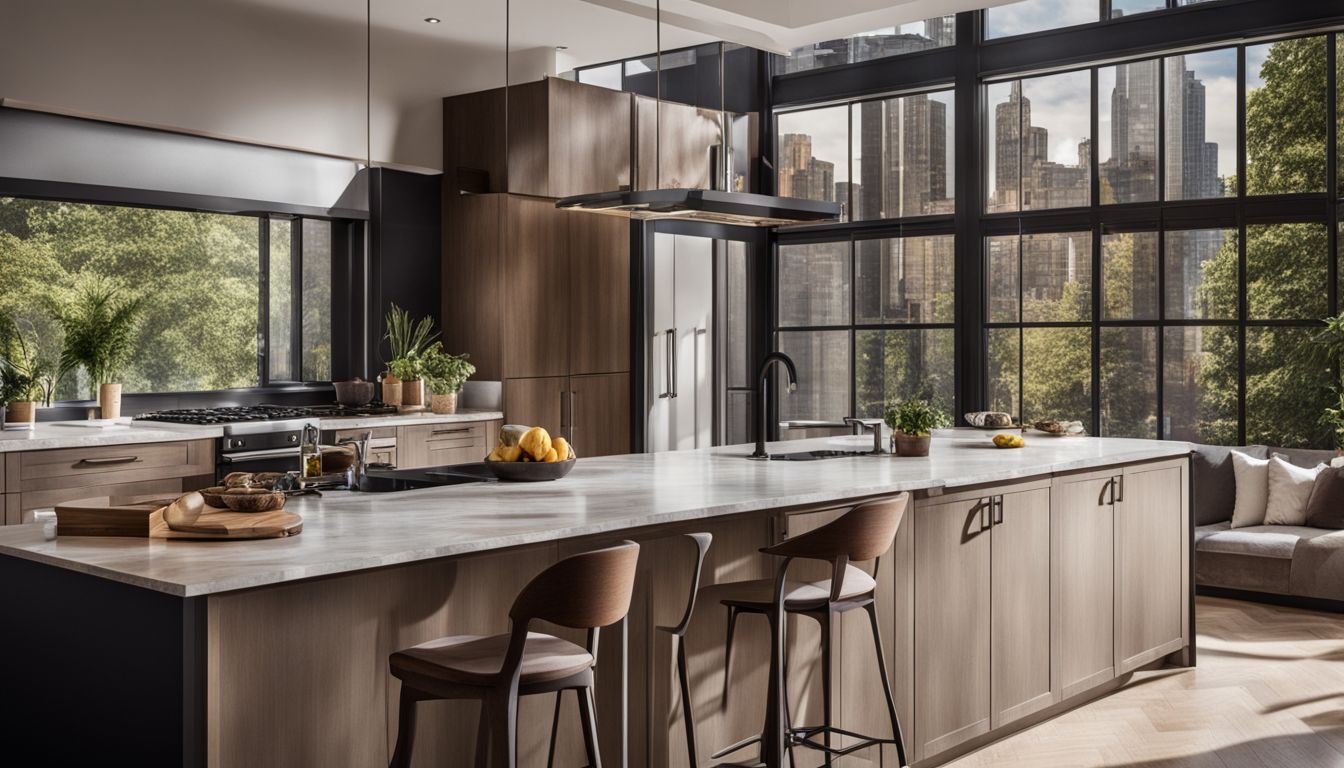
Casement windows have been a popular choice for centuries, with their popularity dating back to the 18th century. They were introduced as a replacement for older stone mullioned windows and quickly gained favor among homeowners.
Over time, casement windows have continued to be widely used and appreciated for their traditional charm and stylish appearance. Today, they are becoming one of the most sought-after window styles, loved for their functionality and ease of use.
Timeline of Popularity
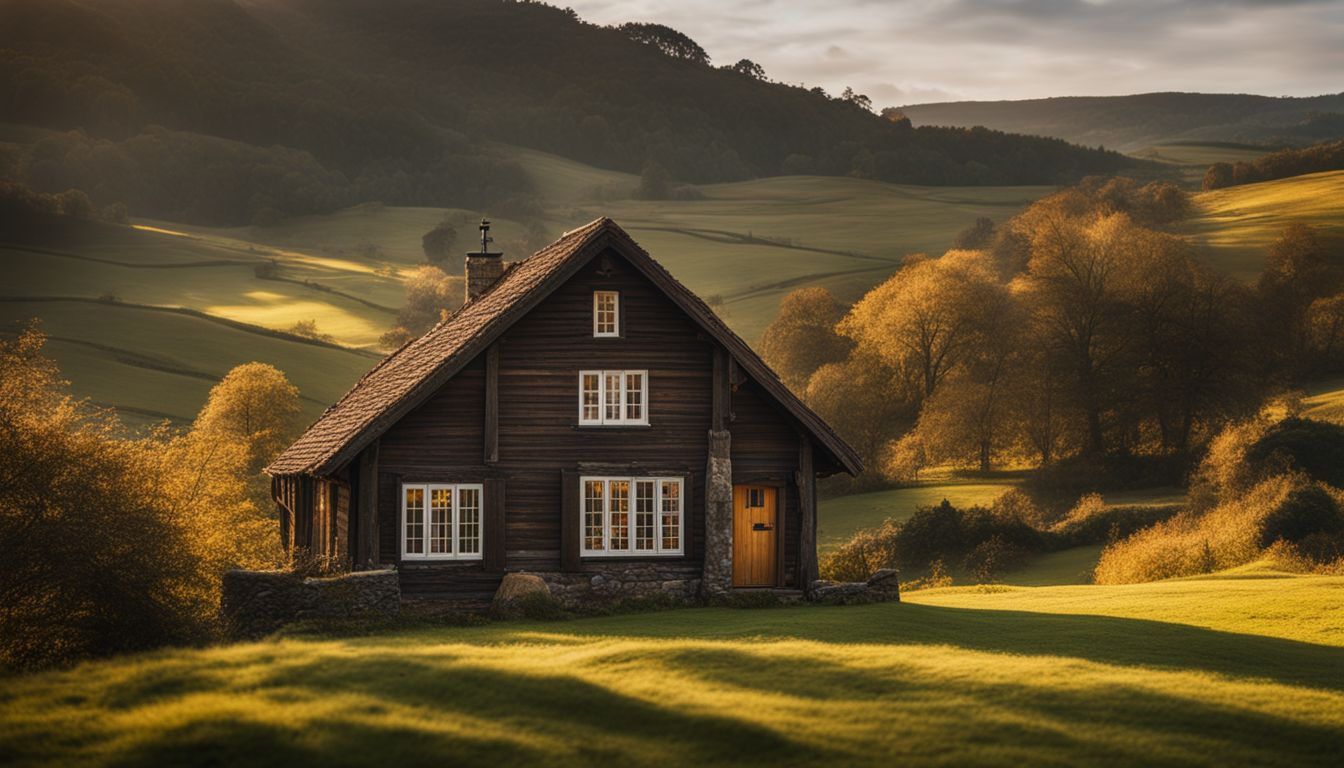
Casement windows have been popular for many years. Here’s a timeline of their popularity:
- 17th-19th Century: Casement windows were commonly used during the Renaissance and Baroque periods.
- Early 20th Century: Casement windows remained popular during the Arts and Crafts movement.
- Mid-20th Century: With the rise of modern architecture, casement windows became less popular as other styles gained traction.
- Late 20th Century: Casement windows started to make a comeback as people rediscovered their aesthetic appeal and functional benefits.
- Present Day: Casement windows are now experiencing a surge in popularity, thanks to their energy efficiency, versatility, and sleek design.
Influencing Factors and Trends
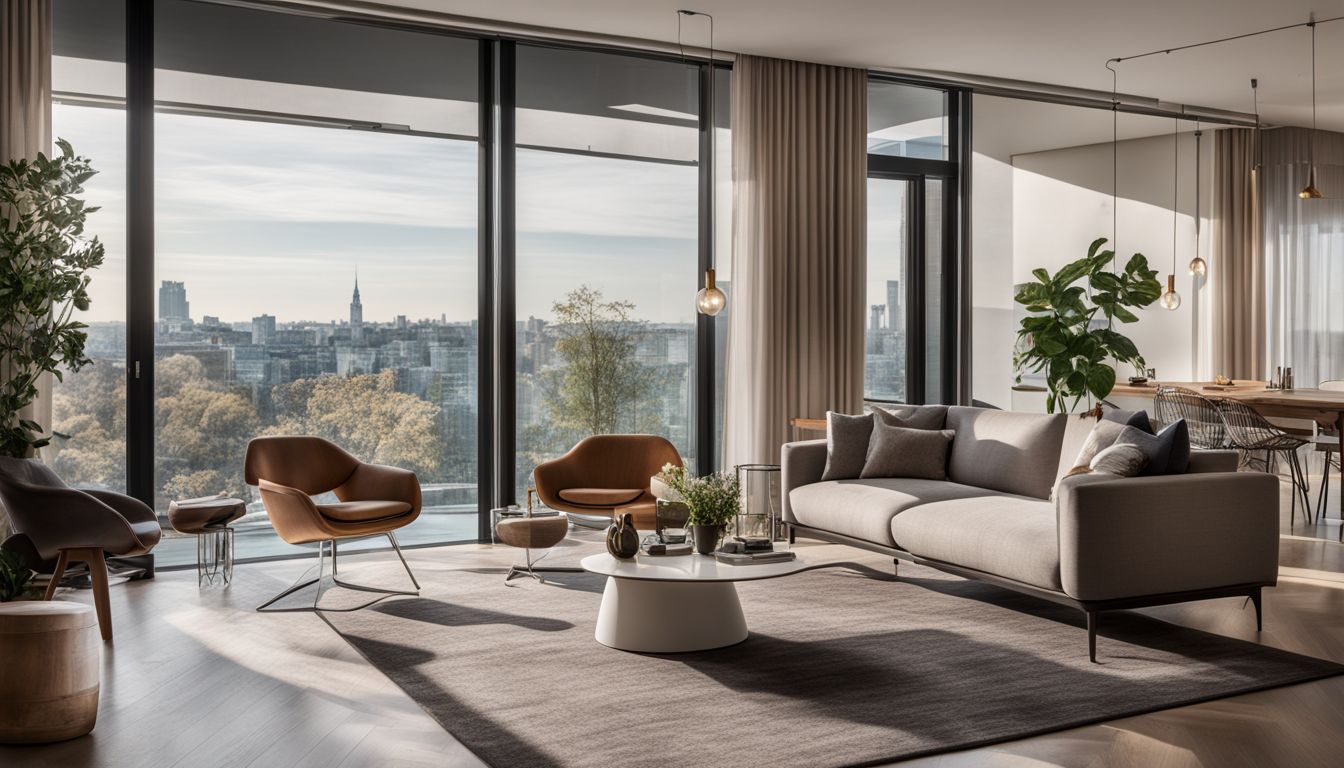
Casement windows have been influenced by various factors and trends over time. One of the main factors is advancements in technology, which have led to improvements in window design and manufacturing techniques.
These advancements have made it possible to create casement windows that are more energy-efficient and durable.
Another factor is the increasing focus on sustainability and eco-friendly building practices. Casement windows are known for their energy efficiency, as they provide a tight seal when closed, preventing drafts and reducing heat loss or gain.
This has led to an increased demand for casement windows among environmentally conscious homeowners.
In terms of trends, there has been a growing preference for larger window sizes and more natural light in homes. Casement windows are well-suited for this trend because they can be made in larger sizes compared to other window types.
The wide glass panels of casement windows allow abundant natural light into the living space, creating a bright and airy atmosphere.
Additionally, the rise of minimalist architecture has also contributed to the popularity of casement windows. Their sleek design and clean lines complement modern architectural styles perfectly.
Lastly, there is a growing interest in customizable home features among homeowners. With casement windows, customization options like frame materials (such as wood or vinyl) and finishes allow homeowners to tailor the appearance of their windows according to their personal preferences.
Overall, these influencing factors and trends have played a significant role in shaping the popularity of casement windows today. Their combination of functionality, aesthetic appeal, energy efficiency, and customization options make them an attractive choice for many homeowners looking to enhance both the look and performance of their homes’ fenestration systems.
Why Do People Like Casement Windows?
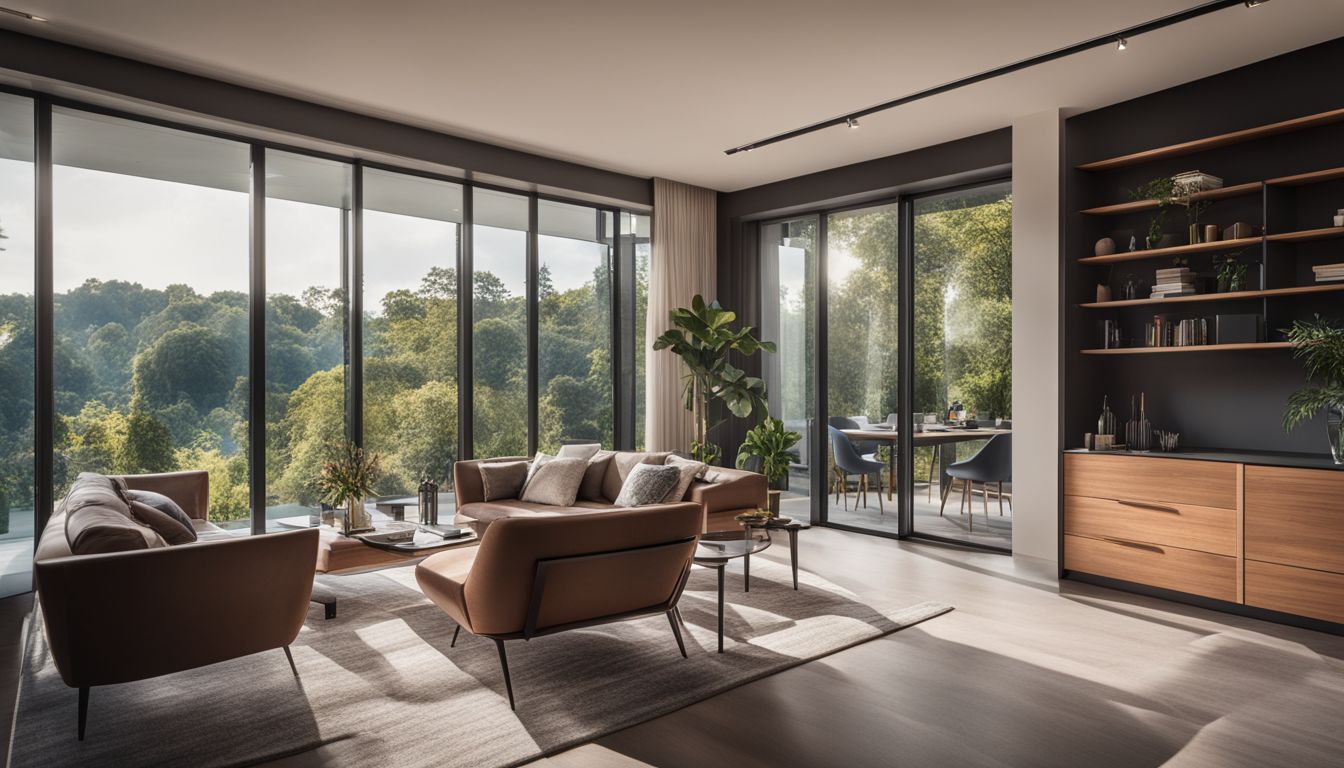
I really like casement windows because they look so sleek and modern. They have a clean and simple design that adds an attractive touch to any home. Another reason why people like casement windows is because of their functional benefits.
For example, these windows offer excellent ventilation when fully opened, allowing fresh air to flow into the space. Additionally, they provide a tight seal against drafts and noise, making them energy-efficient and helping create a cozy environment inside the house.
Overall, the aesthetic appeal and practical advantages of casement windows make them a popular choice for many homeowners.
Aesthetic Appeal
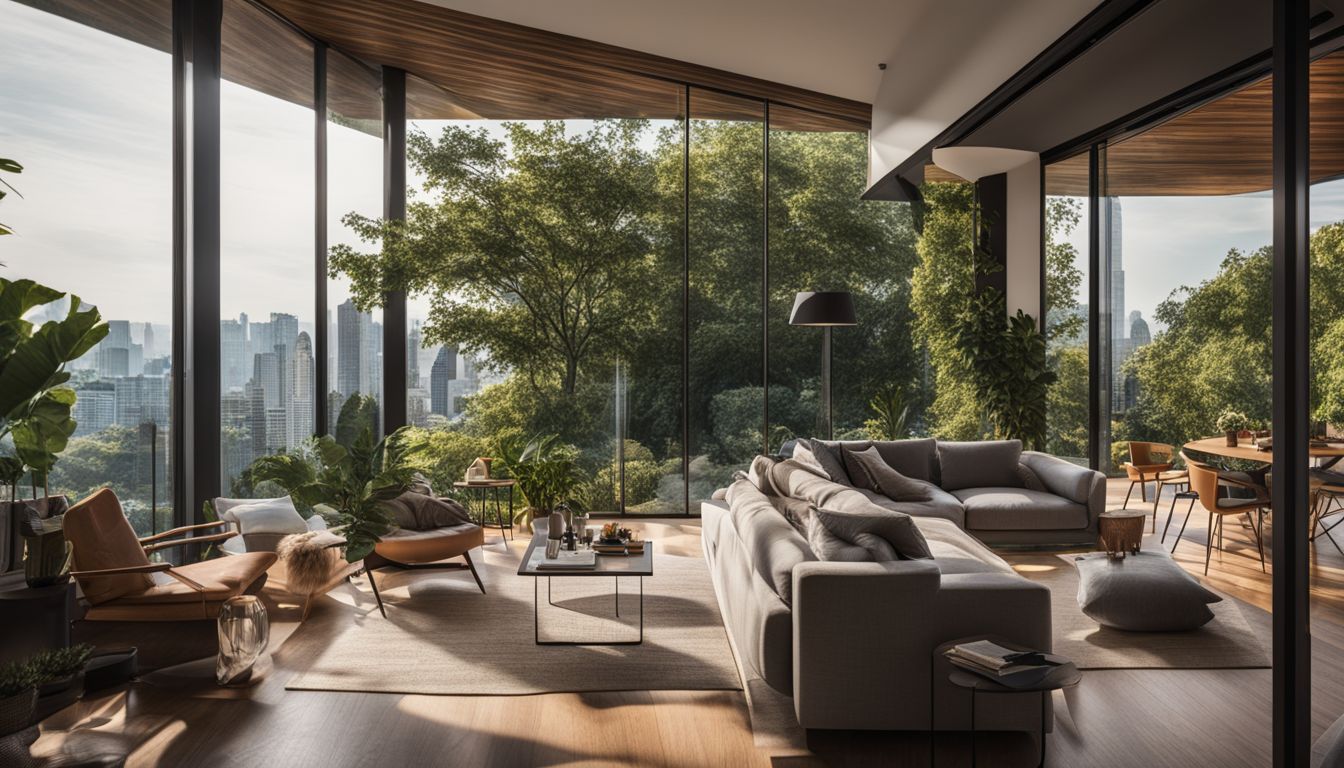
Casement windows have a unique and elegant appearance that can enhance the overall aesthetic appeal of a home. Their simple, clean lines and expansive glass panels create a modern and sophisticated look.
The sleek profile of these windows allows for unobstructed views, bringing in an abundance of natural light and making rooms feel more spacious. Casement windows also offer versatility in design, as they can be customized to match any architectural style or personal preference.
Whether you prefer contemporary or traditional aesthetics, casement windows are sure to add beauty and charm to your home’s exterior.
Functional Benefits
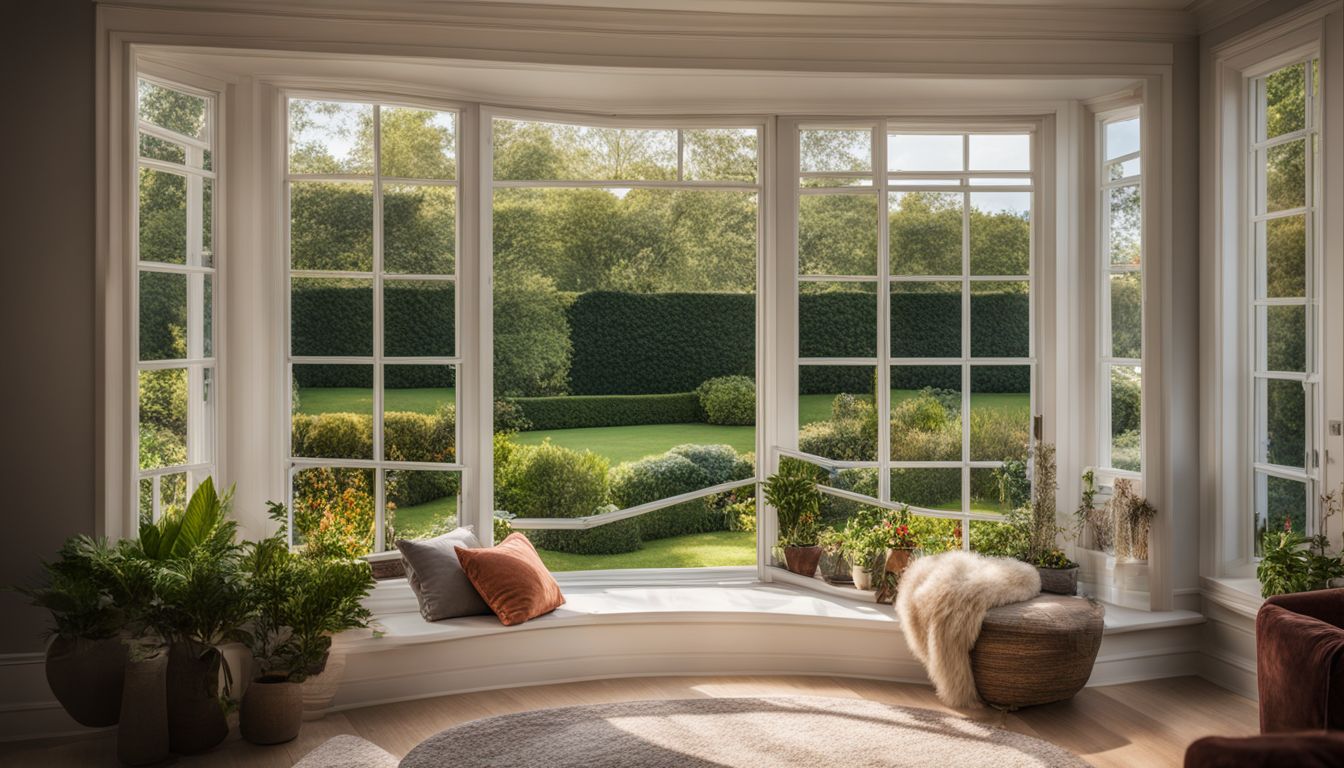
Casement windows offer many functional benefits that make them a popular choice among homeowners. First of all, they provide maximum ventilation as they can be opened fully to let in a lot of fresh air.
This is especially beneficial during the warmer months when you want to keep your home cool and comfortable. Additionally, casement windows are easy to clean because their design allows for easy access to both sides of the glass.
You don’t have to worry about struggling with hard-to-reach areas or hiring professionals for regular cleaning. Another advantage is that casement windows are energy efficient. When closed, they create a tight seal that prevents air leaks and helps maintain indoor temperatures.
This means less reliance on heating and cooling systems, resulting in lower utility bills and reduced environmental impact. Finally, casement windows come in a wide range of materials and styles, allowing you to find the perfect fit for your home’s aesthetic while still enjoying all these functional benefits.
Are Casement Windows a Good Idea?
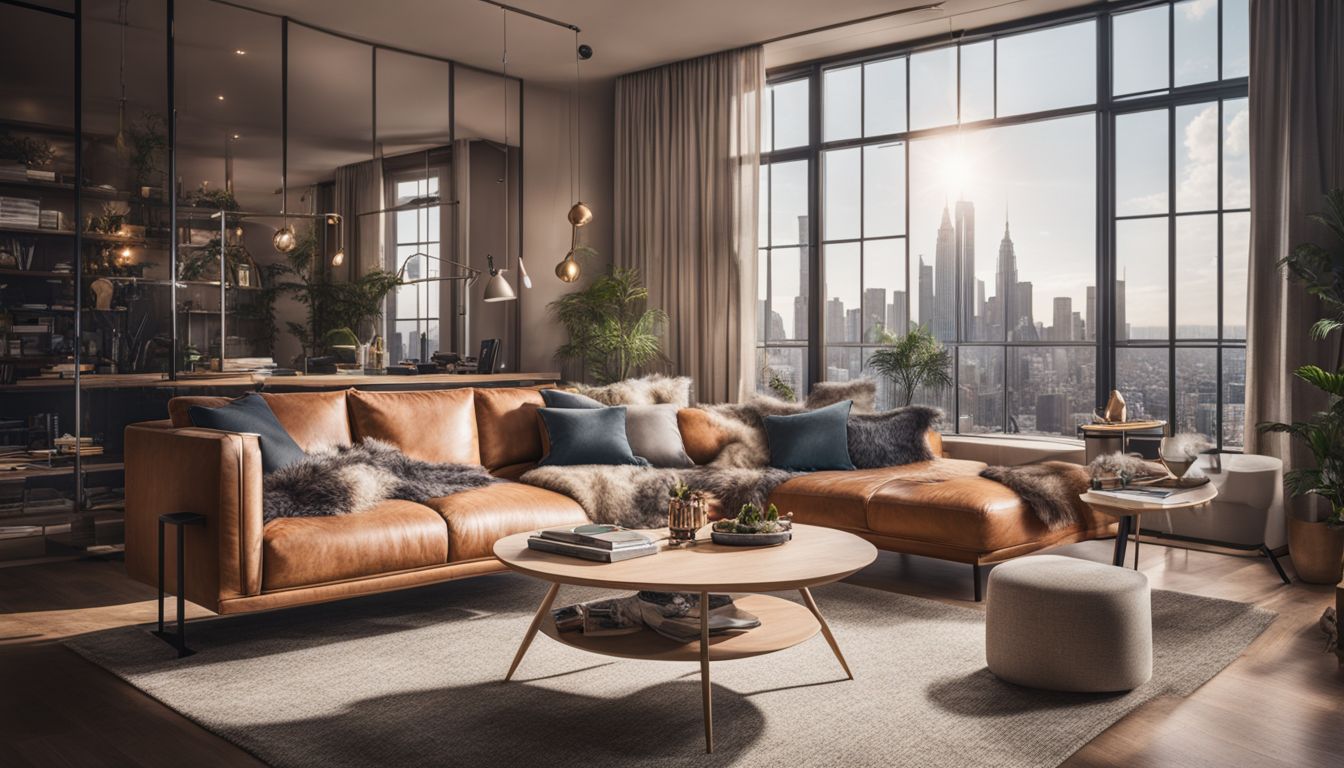
Casement windows can be a great idea for many reasons. Firstly, they provide excellent insulation and help maintain indoor temperatures by sealing out the outside weather when closed.
This means better energy efficiency compared to other types of windows like hung or slider windows. Additionally, casement windows offer maximum ventilation and airflow because they can be fully opened.
You can catch side breezes and direct them back into the room, providing fresh air throughout your home. With their hinges on one side, casement windows open outward like swinging doors, making them easy to operate and offering a stylish look to any architecture.
Suitability in Various Architectures
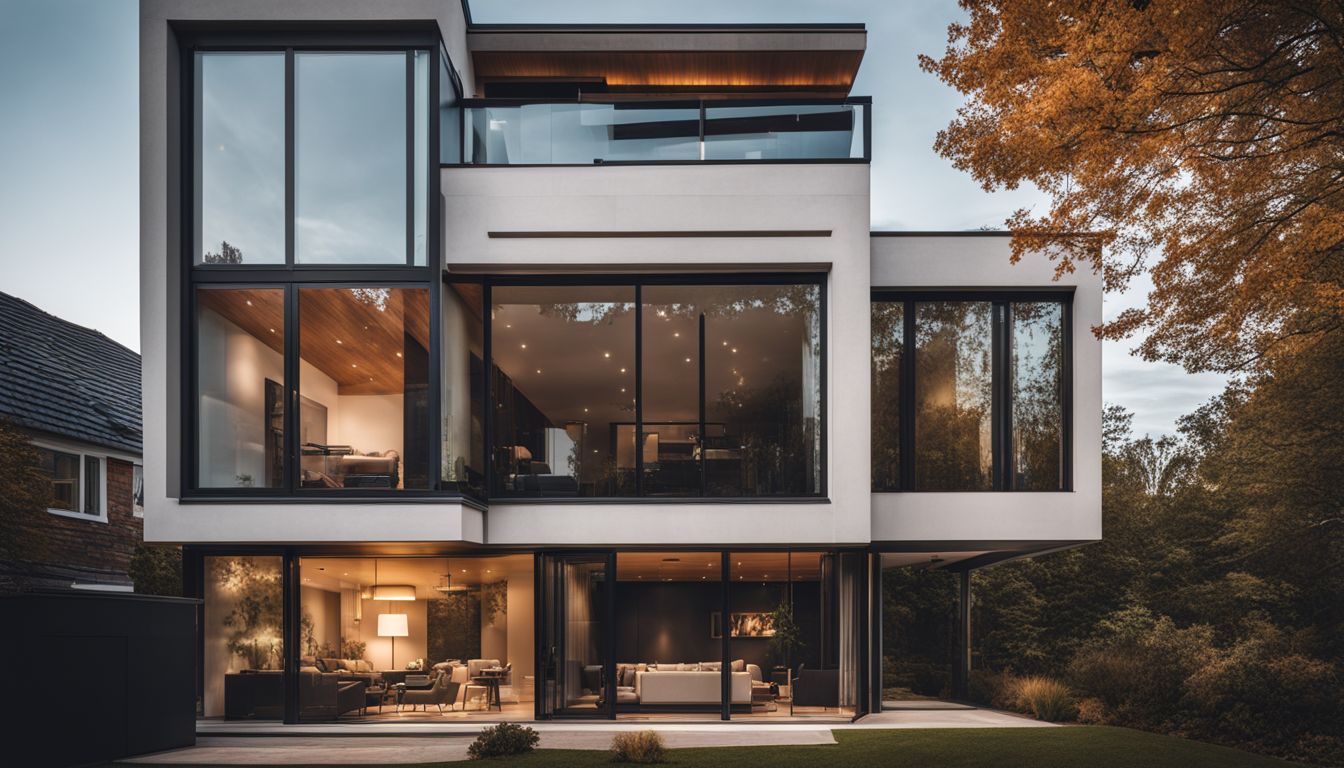
Casement windows are a versatile choice that can work well in various architectural styles. Whether you have a modern, contemporary, or traditional home, casement windows can complement the design and add aesthetic appeal.
Their clean lines and sleek appearance make them suitable for minimalist and modern homes.
For those who prefer a more traditional look, casement windows can be customized with grilles or decorative glass to match the overall style of the house. They also come in different materials like wood, vinyl, or aluminum, allowing flexibility in choosing what suits your architecture best.
In terms of functionality, casement windows are ideal for areas where you want maximum ventilation and airflow. They open out sideways up to 90 degrees, allowing fresh air to enter easily.
This makes them perfect for kitchens, living rooms, bedrooms – basically any room where good ventilation is important.
Another advantage of casement windows is their energy efficiency. When closed properly with a tight seal, they prevent drafts from entering your home which helps maintain indoor temperature better than other window styles like hung or slider windows.
Overall, casement windows are suitable for various architectural styles due to their versatility in design and functional benefits such as excellent ventilation and energy efficiency.
User Testimonials and Reviews

Positive JELD-WEN window reviews often mention speedy replacements, satisfaction with the installation process, and a decent warranty program. Andersen Windows reviews provide information on warranties, pricing, availability, and customer feedback.
These testimonials can help you make an informed decision about which brand or type of casement window is right for you. Remember that consumer reports and comparisons between different window brands can also be helpful in your research.
So take the time to read user testimonials and reviews to gather important information before making a final choice for your home.
What are the Pros and Cons of Casement Windows?
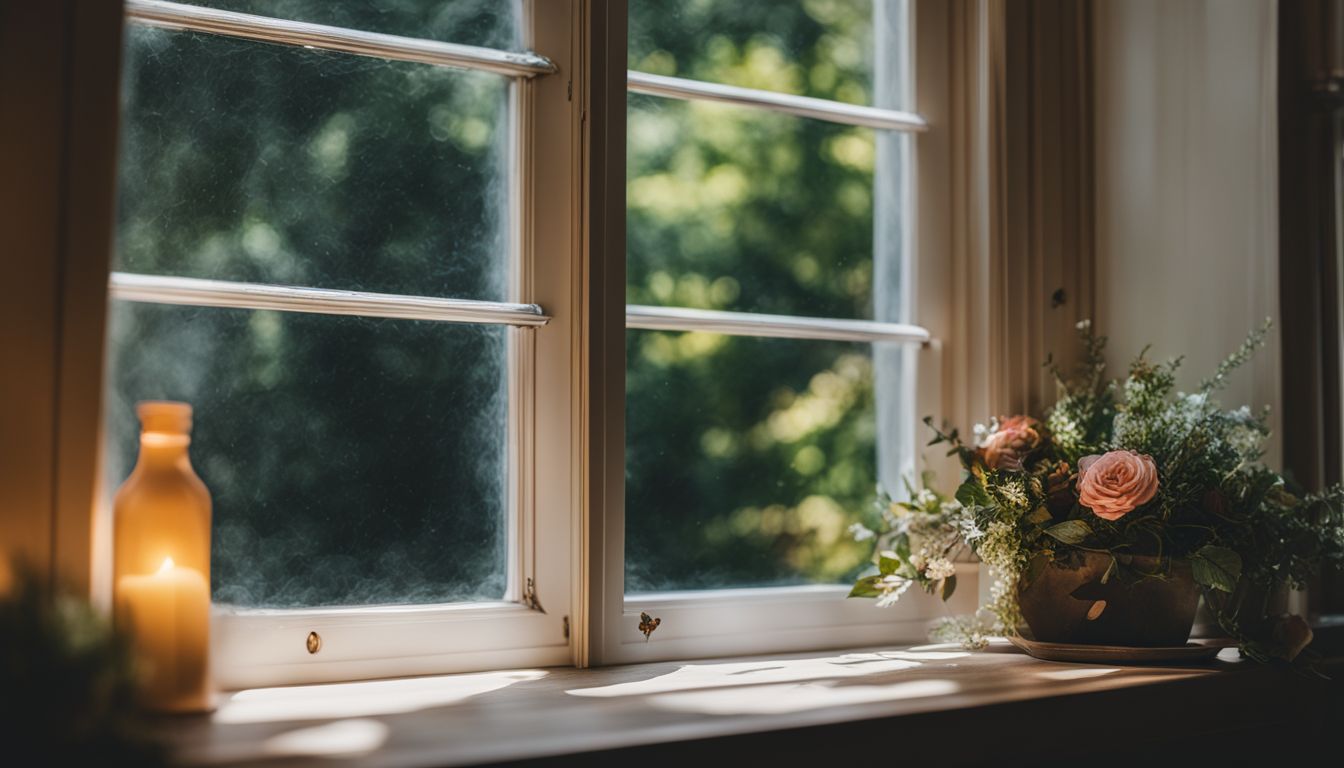
Casement windows have both pros and cons. Let’s start with the advantages. One of the main benefits is their excellent insulation properties when closed, which helps to keep your home at a comfortable temperature.
These windows also offer great ventilation as they can be fully opened, allowing fresh air to flow inside. Another pro is that casement windows are attractive and secure, providing better energy efficiency compared to other window types like hung or slider windows.
However, there are also some drawbacks to consider. Casement windows require stronger frames and sashes because they open outward like swinging doors. This means they may be more expensive than other window options.
Additionally, the hand crank used to operate casement windows could potentially break over time and require maintenance or repair.
In summary, casement windows provide insulation, ventilation, and security but come with higher cost considerations and potential maintenance needs for the operating mechanism.
Analyzing Advantages
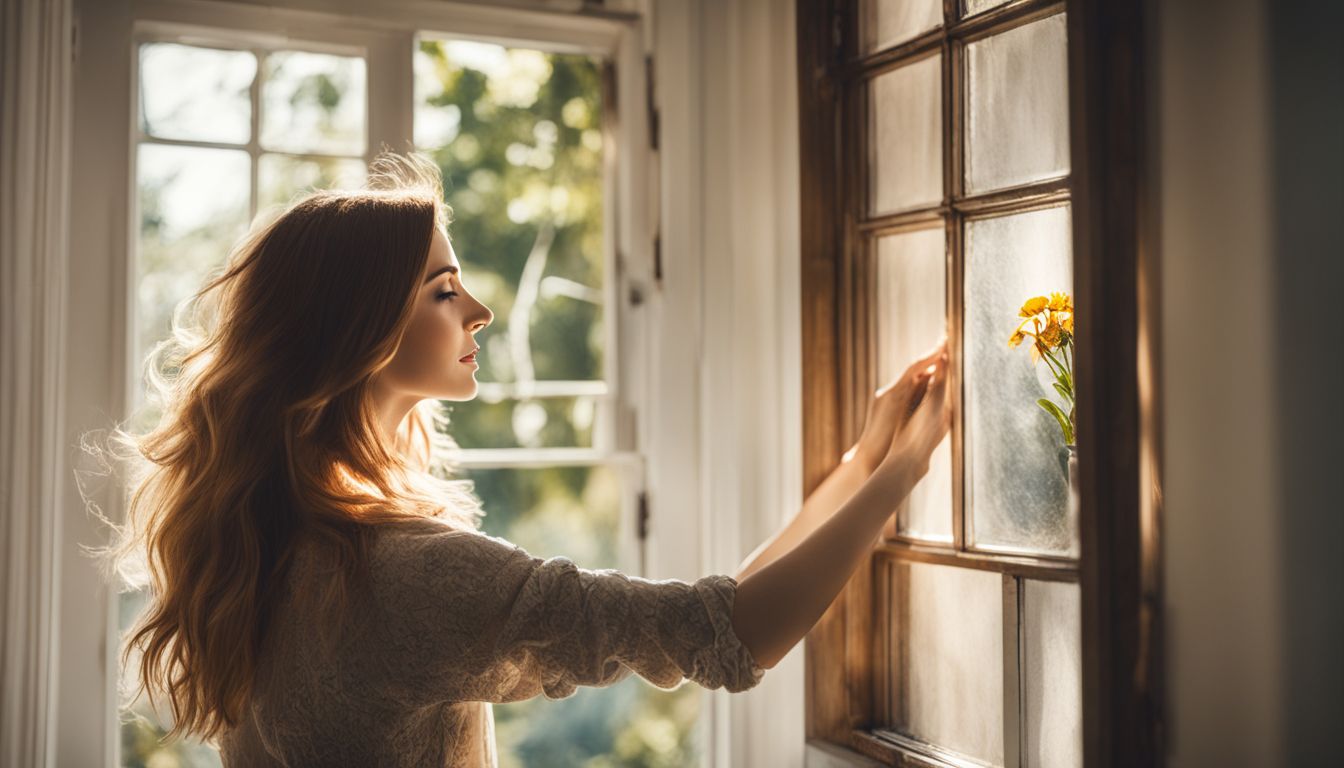
Casement windows offer several advantages, including:
- Maximum ventilation: Casement windows can be fully opened, allowing for a greater flow of fresh air into the room.
- Energy efficiency: The tight seal of casement windows helps prevent air leaks, improving energy efficiency and reducing heating and cooling costs.
- Natural light: Casement windows have a large glass area, allowing more natural light to enter the room.
- Aesthetics: Casement windows have a sleek and modern look that can enhance the overall appearance of a home’s exterior.
- Security: Casement windows are difficult to break into, providing an added level of security for homeowners.
- Easy operation: Casement windows are easy to open and close with a simple turn of a handle.
- Versatility in design: Casement windows come in various sizes and styles, making them suitable for different architectural designs and preferences.
- Low maintenance: With fewer moving parts compared to other window types, casement windows require less maintenance over time.
Discussing Disadvantages

Casement windows have some disadvantages that you should be aware of before making a decision. Here are a few things to consider:
- Cost: Casement windows can be more expensive compared to other types of windows, such as double-hung or sliding windows.
- Security: While casement windows offer good ventilation, they may not be as secure as other window types. The crank mechanism used to open and close the window can potentially be tampered with or forced open.
- Installation Difficulty: Installing casement windows can be more challenging than installing other window types. It requires precise measurements and alignment to ensure proper operation.
Are Casement Windows Out of Style?
Casement windows are definitely not out of style. In fact, they remain one of the most popular styles of windows today. Their timeless design and versatility make them a great choice for both contemporary and traditional-style homes.
Casement windows have been around for centuries, but thanks to their ability to adapt to any aesthetic, they continue to stay in trend. With their sleek lines and unobstructed views, casement windows offer a modern appeal that many homeowners appreciate.
So if you’re considering installing new windows or replacing old ones, don’t hesitate to consider casement windows as a stylish and functional option.
Current Architectural Trends
In today’s architecture, casement windows are experiencing a resurgence in popularity. With their sleek and modern design, they fit well with contemporary styles. Many people appreciate the clean lines and unobstructed views that casement windows provide.
Additionally, casement windows can be customized to match any aesthetic, whether it’s traditional or more avant-garde.
One of the reasons for the current trend is the desire for energy efficiency. Casement windows offer excellent insulation and are known for their airtight seal when closed. This feature helps to keep homes cool in the summer and warm in the winter, reducing energy consumption and utility bills.
As sustainability becomes increasingly important to homeowners, casement windows are often chosen for their eco-friendly qualities.
Another factor contributing to casement windows’ popularity is ease of use. They open outward on hinges like a door, making them simple to operate with just one hand. This makes them ideal for hard-to-reach areas or spaces where accessibility is important, such as above kitchen sinks or behind furniture.
Overall, current architectural trends favor casement windows due to their versatility in design, energy efficiency benefits, and user-friendly features. Whether you’re designing a new home or replacing existing windows, considering casements can add both style and practicality to your space.
Future Predictions
Casement windows are likely to continue gaining popularity in the future, as they offer a timeless and classic look that can enhance any architectural style. With their functional benefits, such as excellent ventilation and energy efficiency, casement windows are expected to remain a popular choice among homeowners and architects alike.
As design trends continue to evolve, manufacturers are also adapting by offering a wide range of customization options for casement windows, ensuring that they stay relevant in modern architecture.
Should Casement Windows Swing In or Out?
When it comes to casement windows, a common question is whether they should swing in or out. The standard type is for them to swing outwards. This allows for better ventilation and easy cleaning from the inside.
However, some people prefer casement windows that swing inwards because they are easier to reach and clean from the outside. Ultimately, the decision depends on your specific needs and preferences.
One important factor to consider is space and design. If you have limited space outside your window or if there are obstacles like trees or fences, it might be more practical to have casement windows that swing inwards.
On the other hand, if you want a more traditional look or if you have ample space outside your window, swinging out casement windows may be a better choice.
Safety and accessibility are also important considerations. In-swing casement windows can be safer for children because they are harder to open from the outside. Additionally, if someone in your household has mobility issues and finds it difficult to reach high places, having windows that swing inward can make opening and closing them much easier.
In summary, whether casement windows should swing in or out depends on factors such as space availability, design preferences, safety concerns, and accessibility needs. Consider these factors carefully when making your decision about which style of casement window will work best for you.
Analyzing Space and Design
When it comes to analyzing space and design, casement windows offer some unique advantages. Because they swing open like a door, rather than sliding up or down like other window styles, casement windows can help maximize the available space in a room.
This is especially beneficial for smaller rooms or areas where furniture placement is important.
In terms of design flexibility, casement windows can be customized to fit different architectural styles. They are suitable for both traditional and modern homes, adding a touch of elegance and sophistication.
With their sleek and streamlined appearance when closed, casement windows can blend seamlessly with various design aesthetics.
Additionally, casement windows provide unobstructed views due to their single pane of glass without any dividers or muntins. This allows natural light to flood into the room while offering clear visibility to the outside world.
The ability to fully open the window also enhances airflow and ventilation.
Overall, analyzing space and design considerations when choosing windows often leads homeowners to consider casement windows as an option that combines functionality with aesthetic appeal.
Safety and Accessibility Considerations
When it comes to safety and accessibility considerations, casement windows have some key advantages. Firstly, these windows offer excellent security features with their hook-shaped lock mechanism, which makes them more difficult for intruders to open.
This can give homeowners peace of mind knowing that their homes are well-protected.
In addition, casement windows are safe for homes with children. They can be equipped with childproof locks or restrictors to prevent them from being opened fully, reducing the risk of accidents or falls.
This is especially important for families with young children who may be curious and prone to exploring.
Another important consideration is energy efficiency. Casement windows provide better insulation compared to hung or slider windows. When closed properly, they create an airtight seal, preventing drafts and heat loss in colder months while keeping cool air inside during warmer weather.
This not only helps maintain a comfortable indoor temperature but also reduces energy consumption and lowers utility bills.
Lastly, casement windows offer excellent ventilation options. With their side-opening design, they allow maximum airflow into the home when fully opened. This is particularly beneficial in areas where good ventilation is essential such as kitchens and bathrooms.
Overall, casement windows provide both safety and accessibility benefits through their secure locking mechanisms, childproof options, energy-efficient properties, and superior ventilation capabilities.
These factors make them a practical choice for homeowners looking to enhance the overall safety and comfort of their living spaces without compromising on style or functionality.
What Style of House has Casement Windows?
Casement windows can be found in various architectural styles, making them versatile and adaptable to different design preferences. Whether you have a modern or traditional-style home, casement windows can complement the aesthetics perfectly.
They are commonly seen in contemporary homes with clean lines and large glass panels for a sleek and minimalist look. Traditional-style houses, such as Craftsman or Victorian homes, also often feature casement windows to preserve their classic charm.
With their ability to suit any style of house, it’s no wonder that casement windows remain popular among homeowners today.
Exploring Various Architectural Styles
Let’s take a closer look at the different architectural styles that pair well with casement windows. Casement windows are versatile and can complement various home designs, making them a popular choice among homeowners and architects alike.
Whether you have a modern or traditional-style home, casement windows can enhance its overall aesthetic appeal.
In contemporary architecture, casement windows are often seen in sleek and minimalist homes. Their clean lines and simple design blend seamlessly with the modern aesthetics of these structures.
The large glass panels of casement windows allow ample natural light to flood into the interior spaces, creating an open and airy atmosphere.
On the other hand, in traditional-style homes such as bungalows or cottages, casement windows add charm and character. These windows can be customized to match specific architectural details like muntins or decorative grilles, giving them an authentic vintage look.
Casement windows also work well in farmhouse-style or rustic homes. Their functionality allows for excellent ventilation while maintaining energy efficiency—a crucial factor for many homeowners today.
Overall, regardless of your preferred architectural style, casement windows offer flexibility in design and can bring both beauty and functionality to your home.
Case Studies and Examples
I’ve come across some interesting case studies and examples that highlight the use of casement windows in different architectural styles. For instance, in a modern farmhouse design, casement windows were used to create a seamless connection between the indoor and outdoor spaces.
The large, floor-to-ceiling casement windows allowed for expansive views of the surrounding landscape while flooding the interior with natural light.
In another case study, I found that an Art Deco-style home incorporated casement windows with geometric patterns and leaded glass panels. These unique window designs added a touch of elegance and character to the overall aesthetic of the house.
Furthermore, I discovered that many contemporary apartment buildings have embraced casement windows for their functional benefits. By installing top-hinged casement windows in high-rise apartments, residents can easily control airflow and ventilation without compromising safety or obstructing city views.
These case studies demonstrate how versatile and adaptable casement windows can be in various architectural styles. From traditional to modern designs, they offer both aesthetic appeal and practical advantages that homeowners appreciate.
What is Most Popular Window Style?
Casement windows are one of the most popular window styles, second only to double-hung windows. They are favored by homeowners for their aesthetic appeal and functional benefits. Casement windows provide a modern and sleek look to any home, making them a popular choice among contemporary architectural designs.
They also offer excellent ventilation control and energy efficiency due to their tight seal when closed. Additionally, casement windows are considered one of the most secure window styles, providing peace of mind for homeowners.
The popularity of casement windows may vary depending on geographical location and architectural preferences but they continue to be a top choice for many people looking to enhance the beauty and functionality of their homes.
Global Window Style Trends
Casement windows are not the only windows that have gained popularity across the world. Many window styles are trending globally due to their unique attributes and pleasurable aesthetics. Here are some of the most popular window styles worldwide.
| Window Style | Reason for Popularity |
|---|---|
| Double-Hung Windows | They are the most popular window style globally and offer great ventilation. Their classic design is also a hit amongst homeowners. |
| Casement Windows | Taking the second position, they are loved for their ease of use and energy efficiency. They are also considered to be highly secure and provide unobstructed views. |
| Sliding Windows | These are preferred for their sleek design and space-saving features. They are ideal for small spaces and modern architectures. |
| Bay Windows | They provide a panoramic view and additional seating or storage space. They are popular in homes with ample space. |
| Awning Windows | These windows are perfect for challenging weather conditions as they keep rain and snow out while letting air in. They are popular in areas with erratic weather patterns. |
While each style has its benefits, the choice heavily depends on individual preferences, architectural design, and environmental considerations. It’s essential to consider these factors before finalizing your window style.
Factors Influencing Popularity
There are several factors that contribute to the popularity of casement windows. One major factor is their aesthetic appeal. Casement windows have a sleek and modern look that many people find attractive.
They can add a touch of elegance to any home or building.
Another factor is the functional benefits that casement windows offer. These windows provide excellent ventilation and airflow when fully opened, allowing fresh air to circulate throughout the space.
This can help improve indoor air quality and create a more comfortable living environment.
Casement windows are also known for their energy efficiency. When closed, they form a tight seal, preventing drafts and heat loss or gain. This can result in lower heating and cooling costs over time, making them an appealing choice for those who want to save on energy bills.
Additionally, casement windows are considered secure due to their design. With their hook-like locks embedded within the frame, they provide enhanced security against intruders compared to other window styles.
Overall, the combination of aesthetic appeal, functional benefits such as ventilation and energy efficiency, as well as enhanced security features make casement windows a popular choice among homeowners and architects alike.
Can You Put Casement Windows in a Bedroom?
Casement windows can absolutely be installed in a bedroom, and they actually offer several benefits. These windows are known for their energy efficiency, which means they help keep your bedroom at a comfortable temperature while also reducing your energy bills.
They also provide excellent ventilation when fully opened, allowing fresh air to circulate and creating a more pleasant environment in your bedroom. Additionally, casement windows have strong frames and sashes that ensure durability and stability.
And the best part? They’re easy to clean and maintain because of their side-hinged design. So if you’re considering upgrading the windows in your bedroom, casement windows are definitely worth considering!
Legal and Safety Considerations
When installing casement windows, it is important to consider legal and safety considerations. Compliance with building codes and regulations is crucial to ensure that the installation meets proper standards.
Different locations and jurisdictions may have specific requirements, so it’s best to consult with local authorities or professionals for guidance.
In terms of safety, casement windows can provide increased security for homes with their hook-shaped lock mechanism. This feature makes it difficult for intruders to open the window from the outside.
Additionally, childproof locks or restrictors can be installed on casement windows to enhance safety in homes with children.
Proper installation of casement windows is essential for both safety and optimal performance. It’s important to follow manufacturer guidelines and hire experienced professionals who know how to install these windows correctly.
By considering these legal and safety aspects, homeowners can ensure that their casement windows are installed safely and comply with relevant regulations.
Design and Aesthetics
Casement windows are known for their unique and elegant design, which adds a touch of beauty to any home. These windows have a classic and stylish look that is becoming increasingly popular in both contemporary and traditional-style houses.
One of the great things about casement windows is that they can be made to suit any aesthetic, whether you prefer a modern, minimalist style or a more ornate and decorative design.
With their sleek frames and wide glass panels, casement windows create a sense of openness and allow natural light to flood into the room. Their clean lines and simple yet sophisticated appearance make them a perfect choice for those who value both form and function in their home design.
So if you’re looking for windows that not only provide functionality but also elevate the overall look of your home, consider installing casement windows.
Conclusion
In conclusion, casement windows offer a combination of aesthetic appeal and functional benefits. They have a long history and continue to be popular due to their ability to provide excellent ventilation and energy efficiency.
While there are pros and cons, they remain a stylish and practical choice for homeowners today.
Summarizing Key Points
Casement windows are a popular choice for homeowners because they offer several benefits. They can be opened fully, allowing for maximum ventilation and airflow. This makes them great for areas where fresh air is important, like kitchens and bathrooms.
They are also considered one of the most efficient window styles, providing an airtight seal when closed to help with energy efficiency. However, some people may have personal preferences or dislike casement windows due to their aesthetics or other reasons.
It’s important to weigh the pros and cons before making a decision on whether or not they’re right for your home.
Encouraging Informed Choices
Explore the various aspects of casement windows to make informed decisions for your home’s architectural design and functionality needs.
Additional Resources
To learn more about casement windows, you can check out window design catalogs. These catalogs provide a wide range of options and styles to choose from. You can also find references to historical data and trends that will give you a deeper understanding of the evolution of casement windows over time.
Exploring these additional resources will help you make informed decisions when it comes to choosing the right windows for your home or building project.
Links to Window Design Catalogs
Sure, here are some useful links to window design catalogs:
- Anderson Windows: They offer a wide variety of casement window designs to choose from.
- Pella Windows: Check out their catalog for stylish and energy-efficient casement windows.
- Marvin Windows and Doors: Explore their collection of high-quality casement windows for different architectural styles.
- JELD-WEN Windows: Their catalog features casement windows with various customization options.
- Milgard Windows: Visit their website to find modern and durable casement window designs.
References to Historical Data and Trends
There is a lot of interesting historical data and trends related to casement windows. Here are some key points to consider:
- Casement windows have been used since the medieval times, with early examples found in European castles and churches.
- In the 16th and 17th centuries, casement windows became more widespread, especially in Tudor – style architecture.
- During the Victorian era, casement windows continued to be popular, often featuring decorative glass panels.
- In the early 20th century, casement windows started to lose popularity due to the rise of sash windows.
- However, in recent years, there has been a resurgence in the use of casement windows in modern architecture.
Reader Interaction
I’m really excited to hear from all of you and engage in a conversation about casement windows! Whether you have questions, opinions, or personal experiences to share, I encourage you to leave comments below.
Let’s discuss the pros and cons of casement windows, their popularity, and any other related topics you’d like to explore. Feel free to share this article with your friends and family who might also be interested in learning more about casement windows.
Don’t forget to subscribe for more informative content on architecture and design trends.
Inviting Opinions and Queries
I’m really interested in hearing your thoughts and questions about casement windows! Do you have any personal experiences with them? Maybe you have a different perspective or some tips to share with others.
Don’t hesitate to leave a comment or reach out if you need any clarification. Let’s start a conversation and learn from each other!
Encouraging Social Sharing and Subscription
Social sharing and subscription play a crucial role in promoting casement windows. By encouraging people to share information about these windows on social media, we can reach a wider audience and increase awareness of their benefits.
Additionally, asking readers to subscribe to our blog or newsletter allows us to stay in touch with them and provide updates on new products or trends.
Did you know that 54% of social media users research products and services on social networking sites? This means that by actively engaging with our audience on platforms like Facebook, Twitter, or Instagram, we can attract potential customers who are actively seeking information about window options.
Window and door companies have already recognized the power of social media as a promotional tool, so it’s important for us to join the conversation.
So let’s make an effort to encourage social sharing! Share this article with your friends or family who might be interested in learning more about casement windows. And don’t forget to subscribe to our blog for regular updates and insights into the world of modern architecture.
Together, we can spread the word about the advantages of casement windows and help others make informed choices for their homes.
FAQs
1. What is the history of casement windows?
Casement windows’ history goes back far in time. People from around the world have used them for years.
2. How do casement windows look?
Casement windows are very flexible in design and can fit many architectural styles. They make any room, such as a bedroom, look good.
3. Are casement windows popular globally?
Yes, casement windows are one of the most popular window styles globally due to their aesthetics and trends.
4. Can I use casement windows in my bedroom design?
Yes! Casement windows work well with different types of rooms including bedrooms because they add beauty to it.




